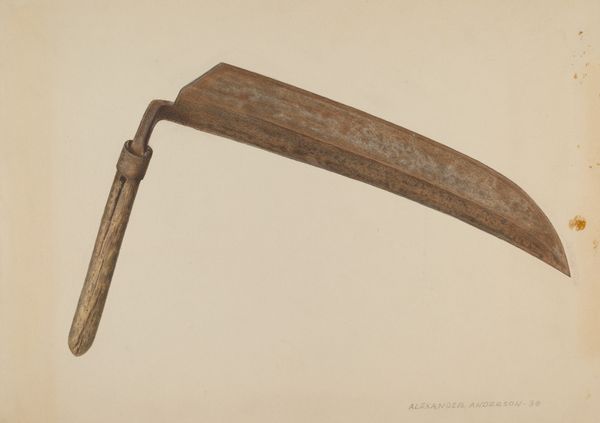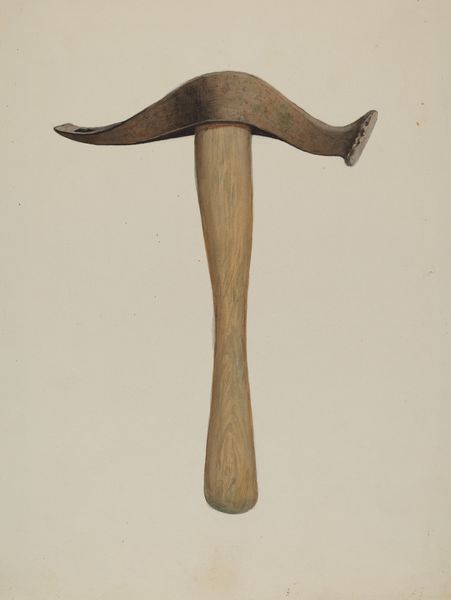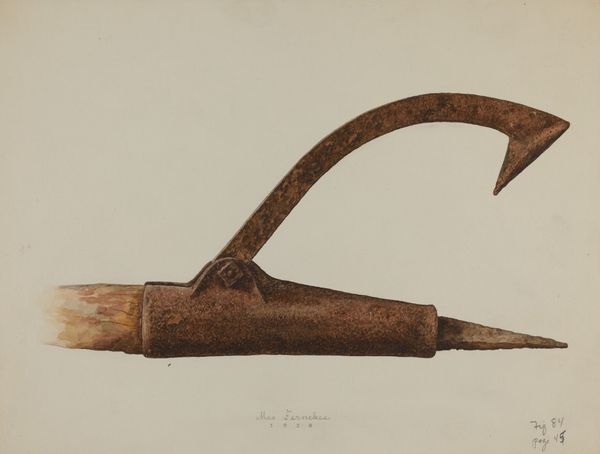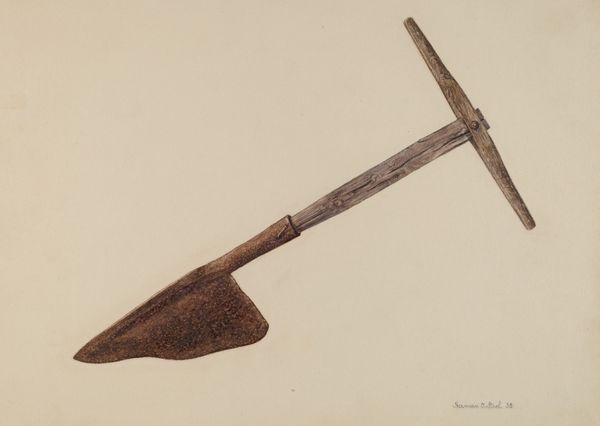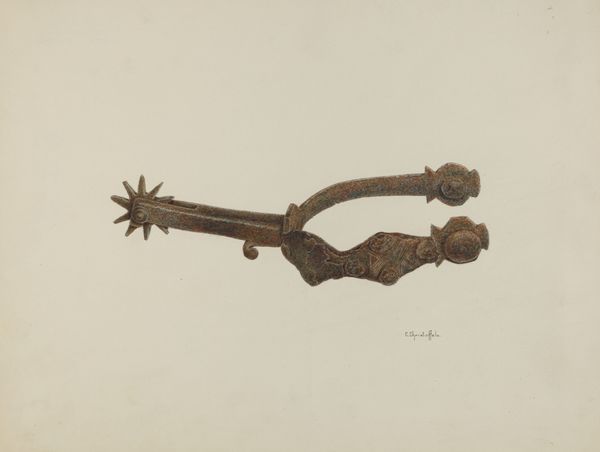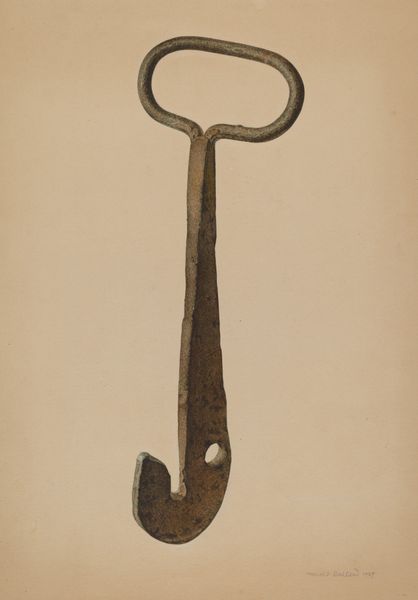
drawing, watercolor
#
drawing
#
water colours
#
watercolor
#
pencil drawing
#
watercolour illustration
Dimensions: overall: 37.8 x 51 cm (14 7/8 x 20 1/16 in.)
Copyright: National Gallery of Art: CC0 1.0
Editor: Here we have Elmer G. Anderson’s “Fireman’s Axe,” a watercolor and pencil drawing from around 1937. It has such a straightforward presentation. It feels…almost bureaucratic. What's your take on this artwork? Curator: On the surface, yes, a seemingly simple rendering. But I'd push us to consider this “object portrait” in the context of its time. The late 1930s, the tail end of the Depression. Consider the symbolism inherent in a fireman’s axe – a tool of rescue and rebuilding. Does it speak to societal resilience? Editor: That's interesting. So you’re seeing a link between this ordinary object and a wider social narrative? Curator: Exactly. And think about the artist’s choice of rendering. Watercolor, typically seen as a medium for landscapes or portraiture, is here deployed for a functional tool. What does it mean to elevate the everyday object of the working class through artistic representation? Editor: I hadn't thought about the medium like that. Does the style then lend itself to how we interpret the subject, the Fireman's Axe? Curator: Absolutely. What might seem like a simple depiction, becomes imbued with questions about class, labor, and the dignity of everyday work, particularly during a period of economic hardship. Think about whose stories get told and how? This quietly subverts expectations. Does seeing the function elevate the symbolism, and thus increase the artwork's significance? Editor: I see what you mean. It’s more than just a drawing of an axe; it's a statement about valuing the tools, and by extension, the labor, that builds society. Curator: Precisely! Considering historical context reframes our perception and allows the image to be reflective, and even radical. Editor: Well, I’ll certainly look at seemingly simple still-life artworks differently from now on! Thanks for this discussion.
Comments
No comments
Be the first to comment and join the conversation on the ultimate creative platform.




